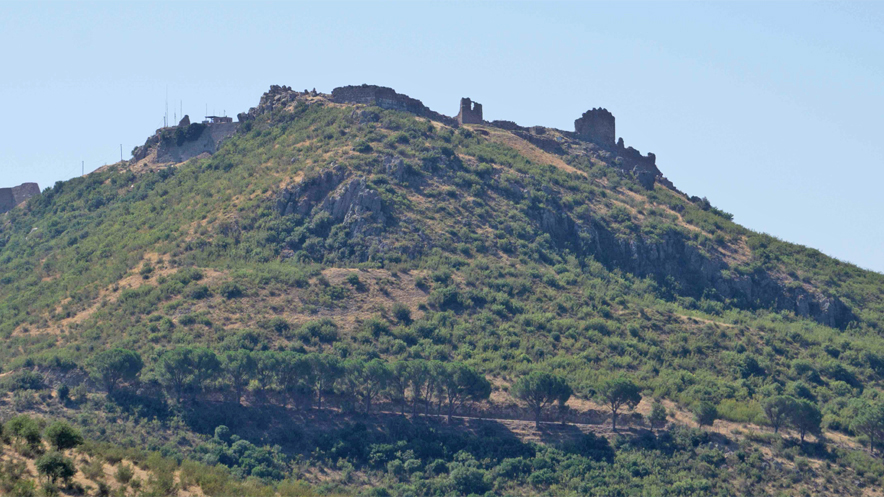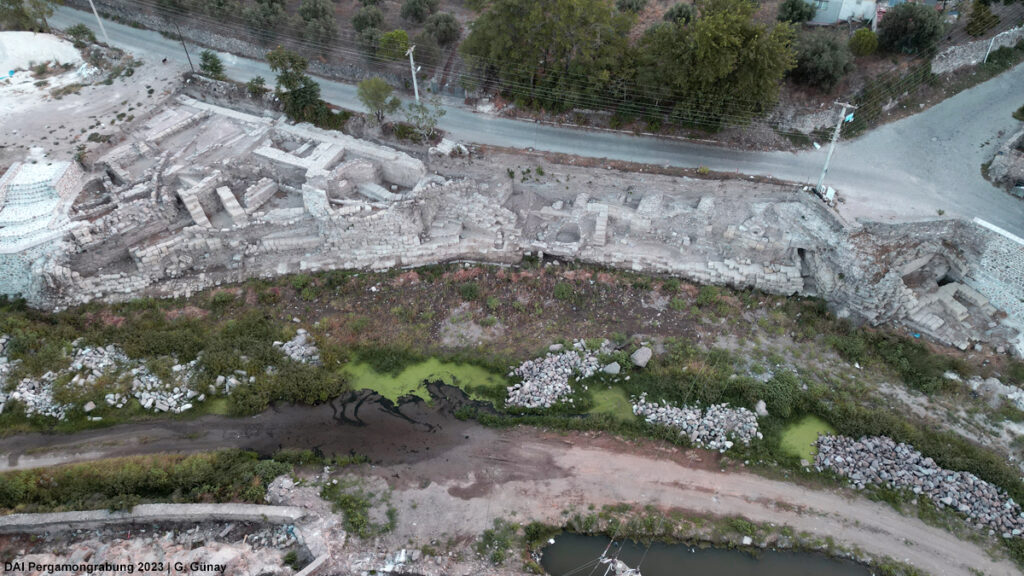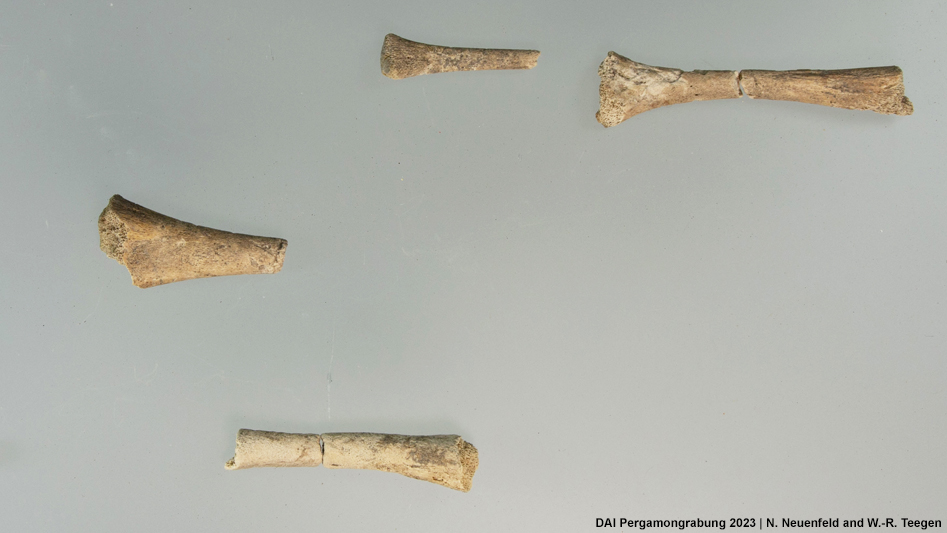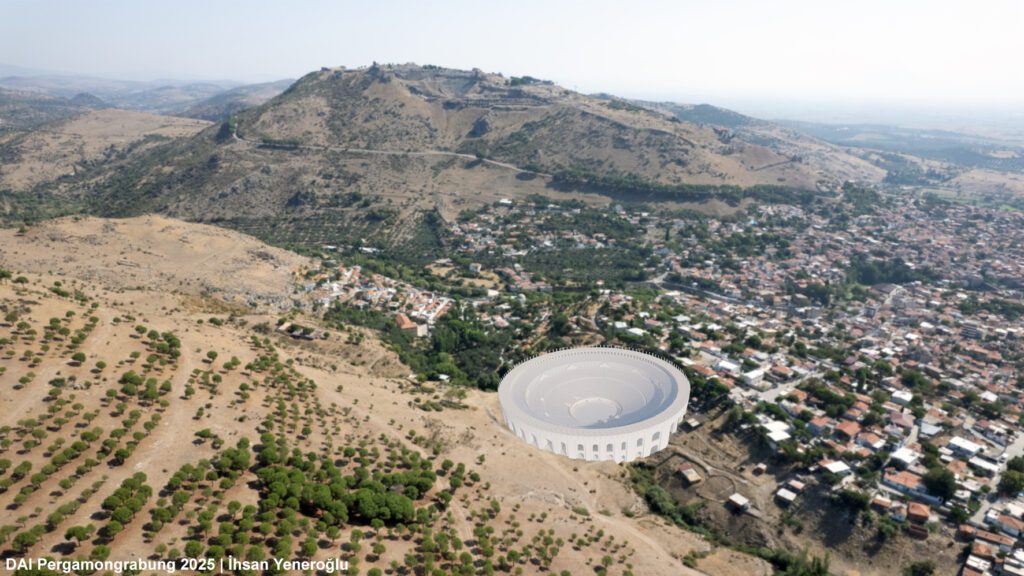
Hidden beneath centuries of history, the Pergamon Amphitheater tells a story of ambition, innovation, and inevitable decline. Once a symbol of Roman grandeur with a capacity of 15,000 spectators, this remarkable structure has now resurfaced in the light of modern archaeological research, revealing secrets long buried under the dust of time.
Scientific Research and Methods
The Pergamon Amphitheater (Fig. 1) stands as one of the four known amphitheaters in Anatolia, alongside those in Kyzikos (Balıkesir-Erdek-Balkız), Anazarbos (Adana-Kozan-Dilekkaya), and Mastaura (Aydın-Nazilli between Bozkurt and Eycelli). Between 2019 and 2021, detailed fieldwork was conducted by the Pergamon Excavation of the German Archaeological Institute (DAI) and a team from Berlin Technical University as part of a subproject of ‘TransPergMicro’ (The Transformation of the Pergamon Micro-Region between the Hellenistic and the Roman Imperial Period). With the recently finished PhD-project of the author, new information about this remarkable structure is now available and tells a complex story of ambition and decay.
A team of experts conducted architectural documentation and archaeological excavations at the Pergamon Amphitheater, supported by specialists in physical geography, anthropology, numismatics, epigraphy, and geophysics, resulting in a comprehensive interdisciplinary research project. All architectural remains were precisely recorded using a photogrammetry-based system, leading to the creation of an accurate three-dimensional model of the amphitheater (Fig. 2-3). The results of these studies, along with all other research findings, are intended to be published collectively in a comprehensive future publication.

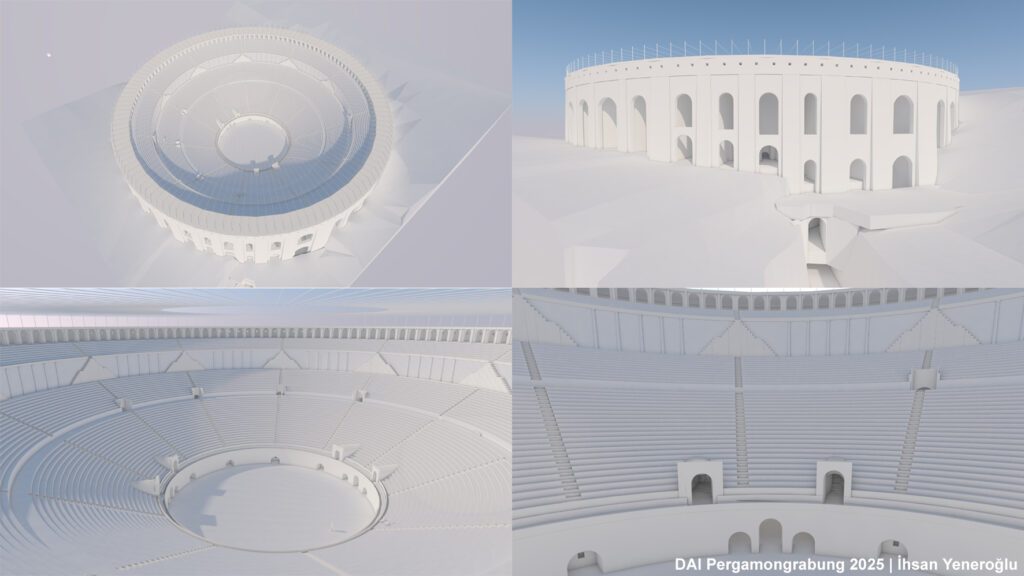
The ceramics recovered from the site, studied by Patricia Kögler, date from the 3rd century BC to the 4th century AD and indicate particularly intensive use of the site during the 2nd and 3rd centuries AD. These ceramic finds demonstrate that the area was already inhabited during the Hellenistic period and experienced significant activity during the Roman Imperial period. Additionally, several bronze coins discovered during the excavations, analyzed by Jérémie Chameroy, suggest that the amphitheater remained in use from the early Imperial period at least until the late 4th century AD. Moreover, bones belonging to a donkey (Equus asinus L.), recovered from a trench in the arena and preliminarily examined by Wolf-Rüdiger Teegen, provide insights into the possible uses of the structure after it had lost its original function.
Construction Process and Structural Features
Research revealed that the Pergamon Amphitheater was built through a construction program consisting of eight phases. This finding has provided crucial insights into the social and ecological interactions between the monument and its surroundings during its construction. Furthermore, a volumetric analysis of the building materials offered an important understanding of the environmental impact of constructing such a monumental structure (Fig. 4).
With an arena diameter of approximately 38 m and an overall amphitheater diameter of around 133 m, the structure could accommodate approximately 15,000 spectators. It was built in the 2nd century AD and likely remained in active use until the early 4th century AD. After this period, the amphitheater gradually lost its original function and underwent systematic dismantling. Its construction materials were removed for reuse in other buildings, and the site subsequently entered a prolonged period of natural degradation that continues to the present day.
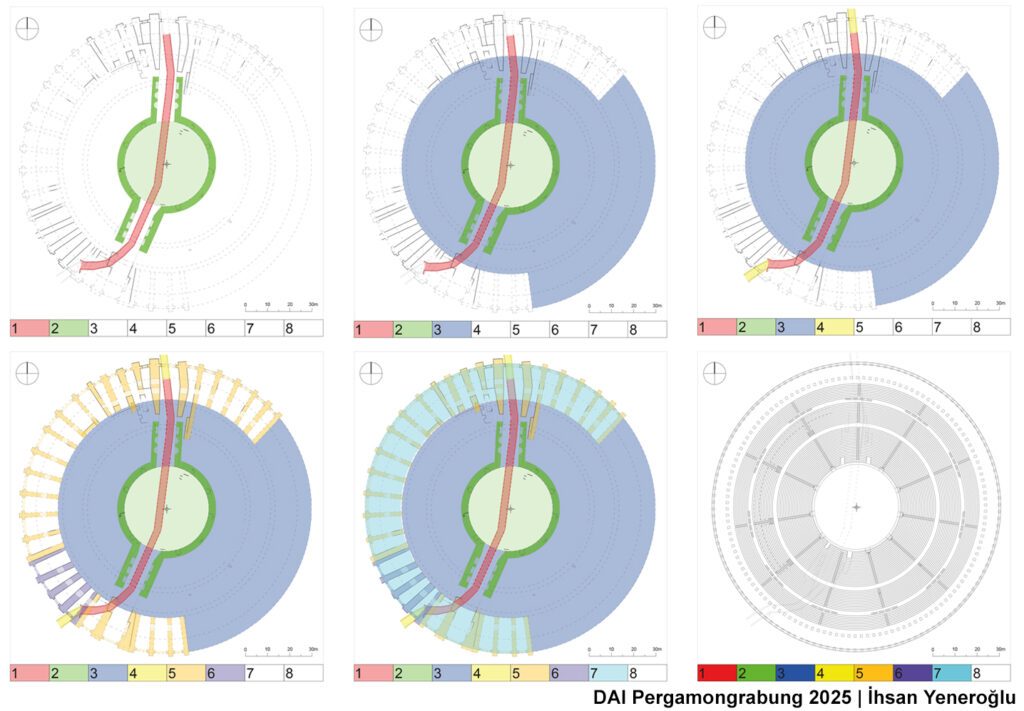
Architectural Characteristics and Location
Unlike most known amphitheaters, the Pergamon Amphitheater features a perfectly circular plan. The primary reason for this unique geometric shape lies in the site’s strategic location, where two slopes could be utilized most efficiently. Factors such as saving building materials and reducing construction costs further supported this design choice (Fig. 5).
Moreover, according to an observation by Felix Pirson published already in 2017 (Pirson 2017), the ancient stadium or circus, the theater structure and the Roman Imperial residences located on Musalla Mezarlık Hill could have formed an ensemble with the amphitheater, deliberately reminiscent of the center of Imperial Rome surrounding the Palatine Hill. This architectural ensemble suggests that Pergamon was engaging in a form of emulation of Roman urban models.
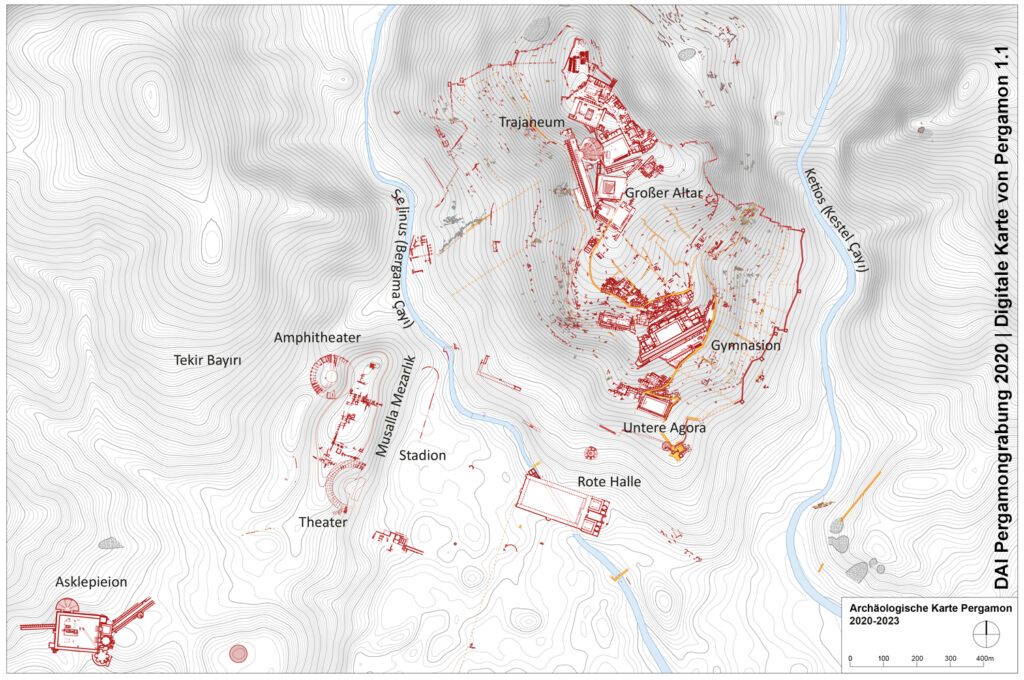
The Possibility of Naumachie
One of the most intriguing aspects of the Pergamon Amphitheater is the possibility that it may have hosted Naumachie (staged naval battles). Preliminary research, carried out as part of the investigations by the physical geography team in 2019 and 2021 (Becker et al. 2024) revealed that large and sudden water movements occurred in the amphitheater. However, it remains unclear whether these geomorphodynamic events happened while the structure was still in use or after it was abandoned, making it difficult to precisely determine the timing of the major river-induced water movements at the arena level. Due to limited excavations during the project – restricted by the pandemic, other external factors, and the presence of an active stream running through the arena – more detailed investigations could not be conducted, and thus the possibility of naumachie has not yet been definitively confirmed.
Team Members and Researchers Supporting the Fieldwork
Thekla Schulz-Brize, Felix Pirson, Turgut Saner, Heinz-Jürgen Beste Mehmet Ali Akdemir, Onur Akkuş, Polat Akkuş, Havva Aslan, Adnan Ateş, Fabian Becker, Marco Blechschmidt, Ali Canıben, Fatih Cambaz, Jérémie Chameroy, Ayşe Çelebi, Fikri Dere, Camillo Dimai, Felix Ehmer, Emre Ekşili, Ercan Erkul und sein Team, Nazan Çisem Ergün, Peter Gebhardt, Léa Geisler, İlknur Gül, Gökhan Günay, Adriana Günzel, Patricia Kögler, Paula Michalski, Sara Monz, Jana Schander, Joshua Simonis, İbrahim Susamcıoğlu, Kemal Şamdan, İlayda Şahin, Mirko Stöwe, Wolf-Rüdiger Teegen, Tutku Topal, Murat Tozan, Aybüke Tuğlu, Sebahattin Tunçkol, Mehmet Tüzel, Özcan Uysal, Veli Uysal, Yunus Uysal, Victor Walser, Daniel Weisbrich, Selehattin Yıldırım.
References
Becker et al. 2024
Becker – X. Yang – M. Doğan – B. Schütt, The Socio-Ecological Model of the Pergamon Micro-Region from a Geoarchaeological Perspective. How to integrate geomorphodynamics? in: Micro-Regions as Spaces of Socio-Ecological Interaction, 1st Milestone Workshop of the Project »The Transformation of the Pergamon Micro- Region between the Hellenistic and the Roman Imperial Period« Istanbul 11–12 March 2022, Deutsches Archäologisches Institut Tagungen und Kongresse 3 (Istanbul 2024) 133–144.
Pirson 2017
Pirson, Die Siedlungsgeschichte Pergamons. Überblick und kritische Revision. Mit einem Appendix von Anneke Keweloh-Kaletta, Istanbuler Mitteilungen 67, 2017, 43–130.

